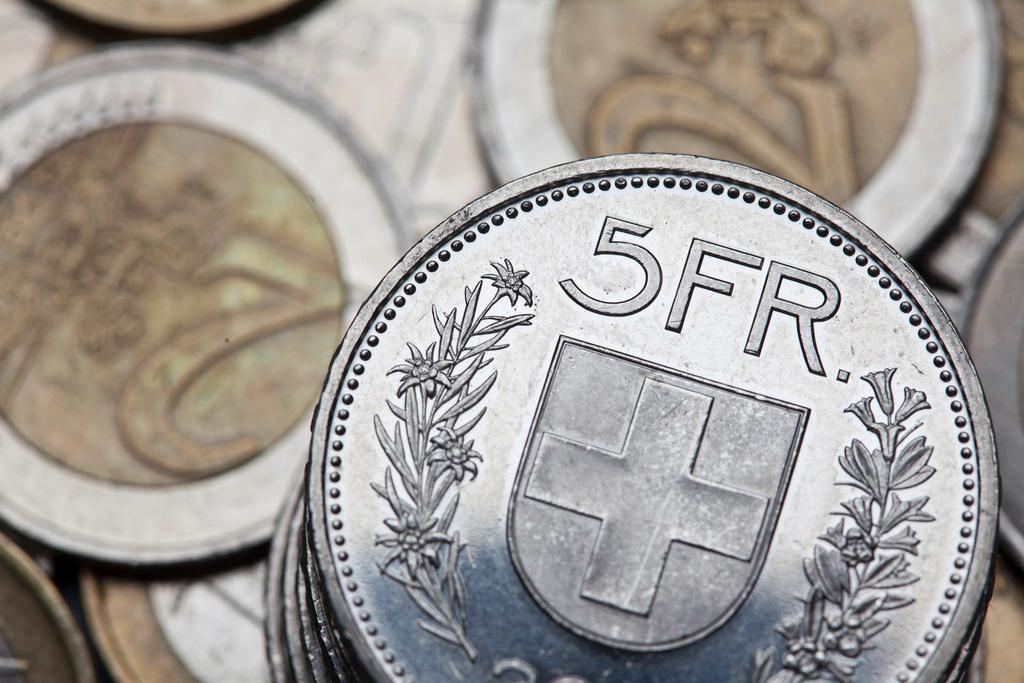Expensive Swiss franc tests central bank

For mountaineers high in the Swiss Alps, the path ahead sometimes looks perilous, whichever way they turn. As it tries to prevent a strong Swiss franc scaling fresh heights in the weeks ahead, Switzerland's central bank could be forgiven a similarly queasy feeling.
Looming policy steps by the European Central Bank on December 3 and the US Federal Reserve on December 16 threaten to trap the Swiss franc in a dangerous crevice.
Unless the traditionally-conservative Swiss National Bank intervenes heavily, or goes deeper into unconventional monetary policy territory, it may fail to prevent further franc strengthening against the euro from hitting Switzerland’s export-led economy.
The SNB fears the franc is seriously overvalued, but already has the world’s lowest official borrowing costs, with an interest rate of minus 0.75 per cent on sight deposits. “They should really be nervous about what might come next,” says Daniel Kalt, UBS’s chief economist in Switzerland.
As a small, open economy, Switzerland accepts being buffeted by global financial turmoil as the price for maintaining its own currency. Fresh in investors’ minds, however, is this year’s “Frankenschock” – the SNB’s surprise January 15 decision to abandon its attempts to cap the franc’s exchange rate at CHF1.20 per euro.
The move resulted in one of the biggest upsets in recent currency market history, with swings during the day of as much as 40 per cent against both the euro and dollar.
In late January, a euro bought less than one franc. The Swiss currency subsequently lost a little altitude. By September, after the eurozone crisis over Greece had waned, a euro briefly bought more than 1.10 francs. Against a strengthening dollar, the franc has more-or-less reversed all its gains after the January 15 move.
December could prove another dangerous month, however. While an interest rate hike by the Fed and stronger dollar would relieve pressure on the SNB, market turbulence could trigger “haven” buying of francs. The bigger threat, however, is of earlier action by the ECB to weaken the euro – which would send the franc higher again.

More
Financial Times
External linkIn response, the SNB – which has its next scheduled policy announcement on December 10 – could push Swiss interest rates even further into negative territory. It believes below-zero borrowing costs have encouraged investor outflows – in turn, weakening the currency. While the SNB frets about distortionary side-effects, the experience so far suggests that the “lower bound” has not yet been reached; financial markets have continued to function more or less normally.
“Cutting rates is the most likely response to an ECB cut,” says Anezka Christovova, analyst at Credit Suisse. “Negative rates have started to generate a flow response with few worrying side-effects so far. The technical zero lower bound has not been reached and the SNB could cut at least 50 basis points further.”
It would not be an easy step for the SNB, however. “This is quite a dangerous game,” warns Mr Kalt at UBS. “At some point, Swiss banks will get to the point where they have to impose negative interest rates on retail depositors – and suddenly everyone takes out their money in 1,000 franc bills and the SNB loses control of the monetary base. Nobody knows where that point is.”
Similar concerns would surround an extension of negative interest rates to a broader pool of banks’ deposits by lowering exemption thresholds. Instead, with its own policy announcement due only a week after the ECB meeting, the SNB could hold fire.
Despite January’s “Frankenschock”, Switzerland has avoided even a technical recession. The country’s history is littered with periods in which the franc has appreciated strongly – some economists argue they encourage innovation and flexibility in its manufacturing sector.
David Kohl, chief currency strategist at Julius Baer, says should the ECB announce a modest further easing in monetary policy in line with market expectations, “we think, the SNB can sit there and wait”.
What does seem certain is that SNB action in currency markets will continue – and perhaps intensify. The January 15 decision followed worries that intervention was out of control – in previous weeks it was selling as much as CHF20 billion a week – but the SNB is not afraid to expand its balance sheet. Foreign currency purchases so far this year have been roughly at the same pace relative to Swiss gross domestic product as the ECB’s quantitative easing asset purchases, according to Credit Suisse calculations.
Yet the success of intervention will depend on the SNB’s credibility. Mr Kohl at Julius Baer says: “Intervention works best when you have a tailwind in the market – and you can put more pain on speculators – but you can’t really turn a trend with intervention.”
Copyright The Financial Times Limited 2015

In compliance with the JTI standards
More: SWI swissinfo.ch certified by the Journalism Trust Initiative













You can find an overview of ongoing debates with our journalists here . Please join us!
If you want to start a conversation about a topic raised in this article or want to report factual errors, email us at english@swissinfo.ch.